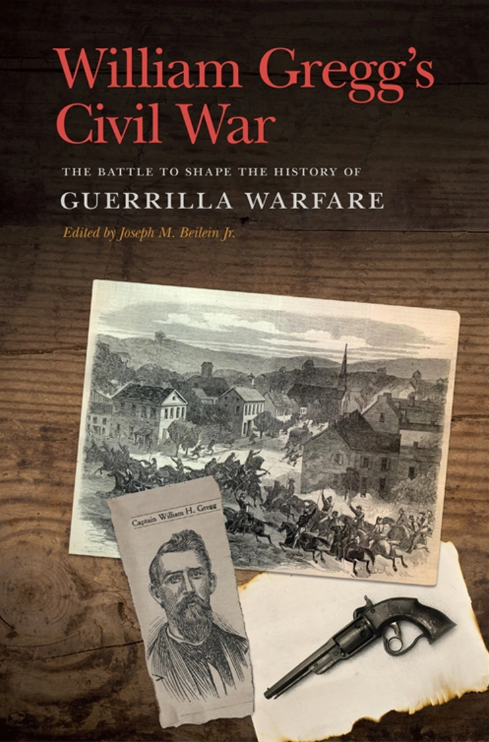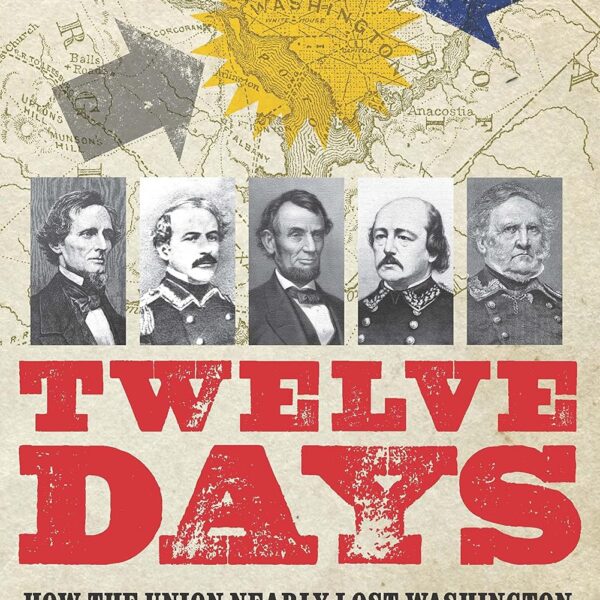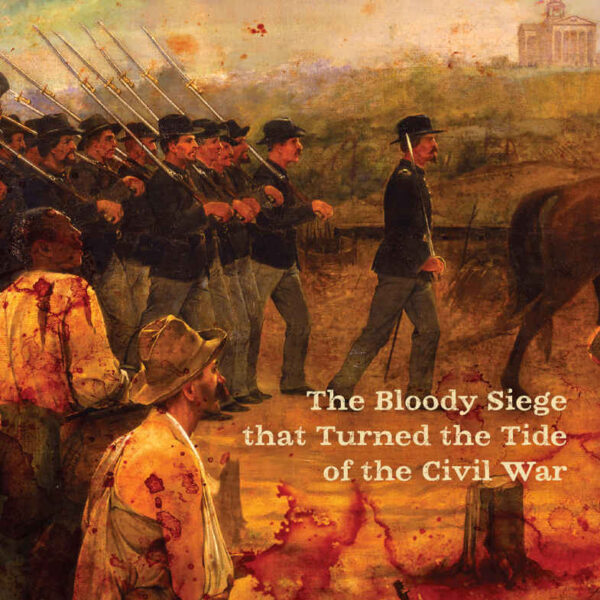Joseph M. Beilein Jr. promises “a hellish and invigorating ride” through Missouri’s guerrilla war, and in that respect William Gregg’s memoir does not disappoint. Gregg’s prose is brisk and lively as the guerrilla moves through his many experiences serving under William Quantrill. Rather than simply an edited version of Gregg’s memoir, though, Beilein uses the work as a thoughtful case study of the ways in which history is made and unmade.
Beilein’s introduction is the most important part of the book, providing background on Gregg, the memoir, and its usage in guerrilla historiography. The book’s key figure is not the guerrilla author but historian William Connelley, who encouraged and coached Gregg through the writing of the memoir. The book also includes some of their correspondence. With the memoir nearing completion, Connelley published his own book, Quantrill and the Border Wars, which relied on Gregg’s writing as a source to blame and criticize Confederate guerrillas for the violence in Missouri and Kansas. But Connelley ultimately failed to publish the manuscript of Gregg’s memoir as he promised. Not completely destroyed, a copy of the manuscript instead sat in the archives of the State Historical Society of Missouri.
The manuscript itself is a fascinating look into the life of a guerrilla. Gregg moves rapidly through his wartime experiences: from his enlistment with the guerrillas, interactions with Quantrill, and various raids through Missouri and Kansas to Gregg’s eventual withdrawal from the war before its end in the early summer of 1865. Beilein uses a light editorial touch, reminding the reader that the work was already edited by Connelley and intended for publication.
Beilein’s introduction provides a great deal of the highlights, though it would be difficult to jump in without some background in guerrilla history first. Beilein provides some interesting annotations throughout, offering histories of certain figures and tracking down references to the Official Records that lend context to the events Gregg described. After the memoir, there are several appendices supplying short anecdotes from Gregg. These lend additional color to the guerrilla’s wartime experiences. Following these appendices is the correspondence between Gregg and Connelley, in which Gregg produces additional details for parts of his in-progress narrative, and Connelley encourages his work.
Beilein uses Connelley’s and Gregg’s accounts of the guerrilla war to discuss how history was made and understood in early twentieth century America. Both parties wanted an “objective” history of the war. For Connelley, that objectivity meant being critical of guerrilla actions. Unlike Gregg, Connelley claimed to be reporting only the “facts.”
Connelley’s own slanted perspective dominated guerrilla historiography into the future. Beilein cites Richard Brownlee’s Gray Ghosts of the Confederacy and Albert Castel’s William Clarke Quantrill as two books that pursued this same brand of “objective” history. More recent scholarship has challenged these works; still, as Beilein points out, these older interpretations have enjoyed a remarkably long shelf-life when it comes to understanding the complex guerrilla struggle in Missouri. Even works such as Michael Fellman’s Inside War claim to struggle with this notion of objectivity when studying the guerrillas, searching for “reality” while eschewing romanticism or dismissal.
While Gregg’s tale of guerrilla activity is fascinating, and reveals much about the Civil War’s violence along the Kansas-Missouri borderland, Beilein is more concerned with how the memoir was written and what that tells us about the historical process. This book will provoke interesting questions and discussion on the nature of historical research, the responsibility of historians, and the way history has been crafted over the years.
Keith Altavilla teaches history at Lone Star College-CyFair.





